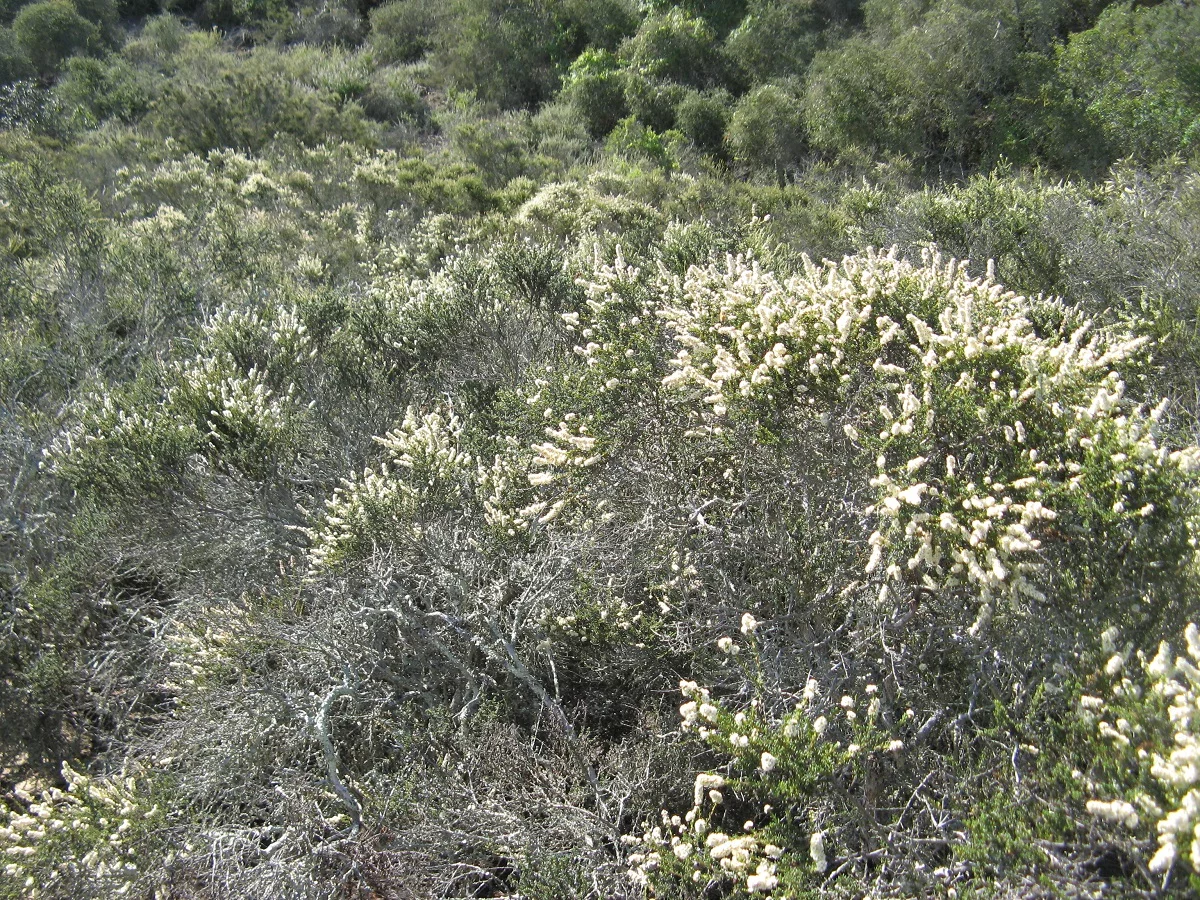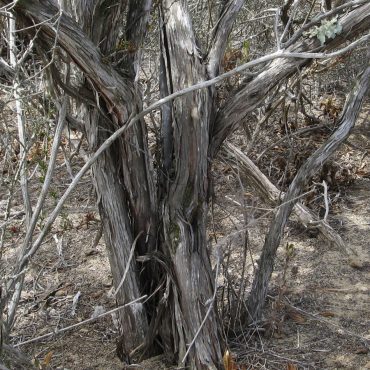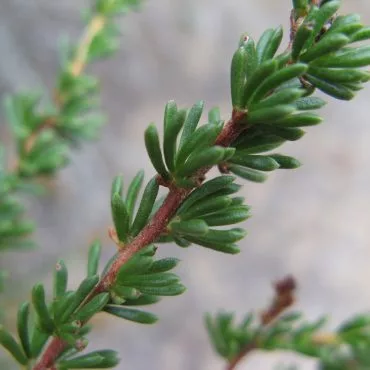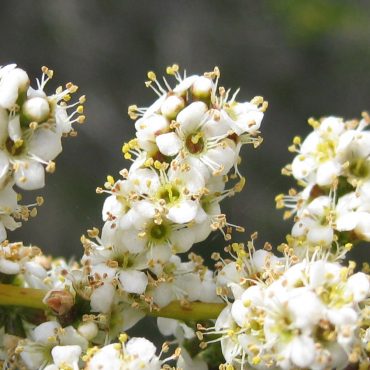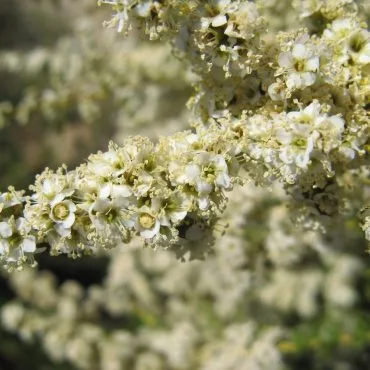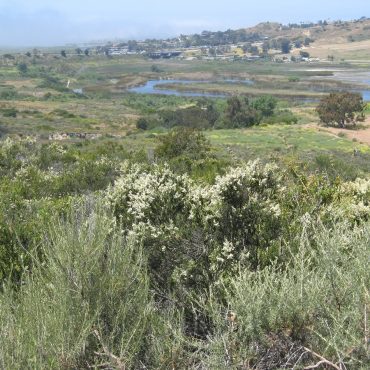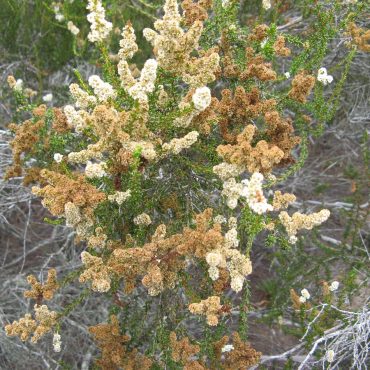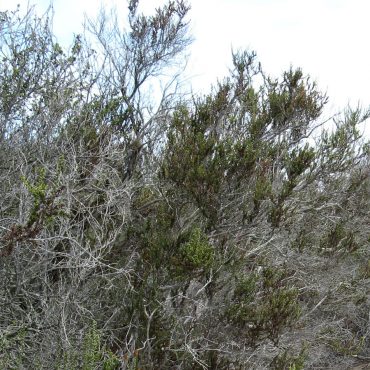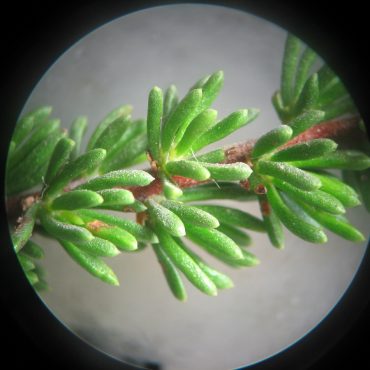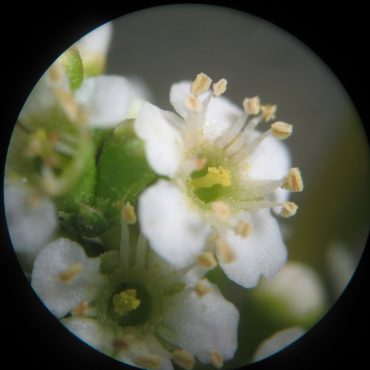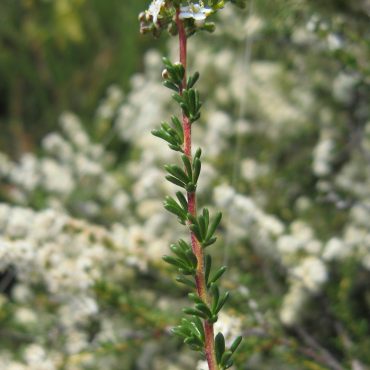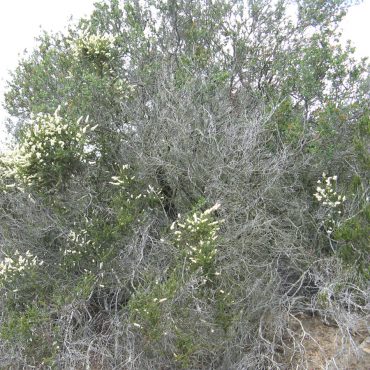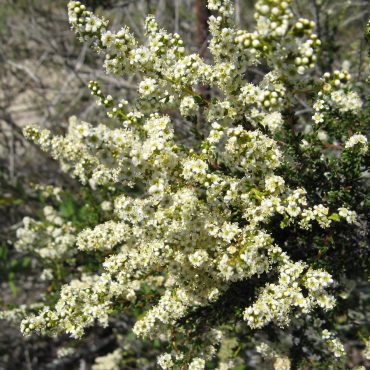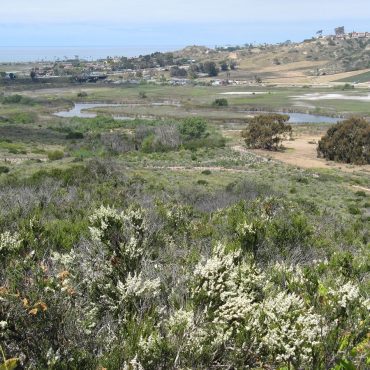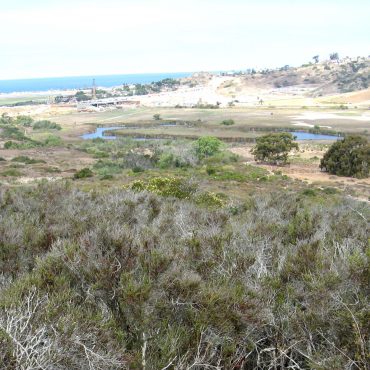Ecology
Chamise is the quintessential chaparral species. It dominates much of that vegetation type, where its numerous short branches interweave with those of neighboring plants forming the impenetrable thicket that chaparral is known for. It also has most of the characteristics that adapt chaparral species to lack of summer rain and to periodic fires.27,174 The leaves are small, thick and waxy, slowing water loss. The root system is extensive;5,38 the main roots have been excavated to 25 feet (8 m) depth before disappearing, and root radial extent is generally twice that of the crown. Thus, chamise has efficient uptake of rain water as well as access to subsurface water sources. Thus, chamise has efficient uptake of rain water as well as access to subsurface water sources
Chamise stems arise from a large, subsurface, woody mass – a burl – which is protected from fire by the surrounding soil. The burl contains tissues capable of generating new growth, providing rapid regeneration after a fire.5 Chamise also produces two types of seed; a few are capable of germination the following season, but many need heat or chemical cues from fire to sprout. These build up a seed bank below the soil surface, providing new plants after a fire. Curiously, chamise is the only chaparral shrub with both strategies.5,36 Neither strategy however, assures fire survival, which depends upon season, fire intensity and time since last burn.5
Ironically, chamise also has characteristics that seem to promote fire, such as small, resinous leaves that are highly flammable during the dry season (hence the common name greasewood),26 and quantities of small, dead branches and dried flowers that accumulate in the canopy providing ready fuel.426 These would seem to be undesirable characteristics if burning is disadvantageous to chamise. The unanswered question is the extent to which these may be considered adaptations to promote fires, at least fires of the proper frequency and intensity to maximize the survival of chamise. The possibility that flammability is an ecological and evolutionary driving mechanism (like flower color and shape or drought tolerance) is currently receiving attention from ecologists.426

